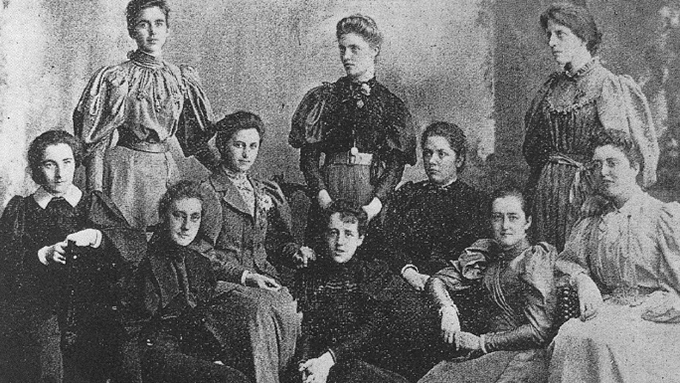
Andalusian public universities have recently shown their rejection of the exclusion of Afghan women from higher education. This means, in addition to a violation of human rights, global impoverishment.
It should be remembered that in Spain women were able to access university studies relatively recently, despite the institution’s medieval origins. An absence that shows the androcentric conception of history and the predominance of a culture that has confined women to the private sphere, as wives, mothers and caregivers. The impediments to women’s access to knowledge meant then, and mean today, their exclusion from power, reserved for men.
When did you access higher education?
The irruption of women in the Spanish university had a slow path and full of obstacles and their presence was not confirmed until the end of the 19th century. From a political point of view, the possibility of women accessing higher education, conceived to date for male elites, had not been raised.
In a social context in which the access of any man to the university was not assumed, even less was the possibility that a woman did so. It is true that men could also be excluded from the university space based on the social categories that prevailed at the time, but never because of their sex.
Women, on the other hand, were only excluded by the fact of being a woman. However, no regulatory provision prohibited the access of women to university studies, although the conceptual presumption played in favor of men. Omission that could be due to an oversight of the legislator who even considered this possibility.
So, if it was not expressly prohibited, could they access higher education? At the end of the 19th century, several women requested to take the secondary education exam, and their requests were favorably estimated because they did not contravene any legal norm. It is true that the sources of the time include some of the inconveniences caused by the meeting of men and women in the classes, but finally, the right of women to education prevailed. The requests became more frequent and opened the door to other women, since the responses extended to those who were in the same situation.
Soon they stopped being satisfied with the Bachelor’s studies and requested access to the Degree exam. This was the case of Dolores Aleu Riera and María Elena Maseras Ribera, who managed to take the Medical Degree exam at the University of Barcelona in 1822. Although, on this occasion, the authorization was more restrictive and did not apply to other similar cases. , which confirmed the restriction in access. To such an extent that a Royal Order of June 11, 1888 expressly ruled on this issue: women were admitted as students, but for non-official education. This meant that they could not access classes, except to take the appropriate exams, after consulting the higher authority, which at that time was the General Directorate of Public Instruction of the Ministry of Public Works.
This restrictive norm was in force until the year 1910 when, in the context of the Institución Libre de Enseñanza, it was left without effect because it was considered an unfair process for applicants for higher education . That same year, on September 2, a royal order validated university degrees obtained by women .
From students to professionals
The royal order of September 2 allowed access to the university space, as students, but it also opened the doors to an academic career, being able to join national university faculties and centers as teachers and researchers.
The faculties with the largest number of female students enrolled were those of Pharmacy, Philosophy and Letters and Sciences, as these offer a greater range of professional opportunities. The least requested studies were precisely the legal ones, because they presented a restrictive professional field for women: they were allowed to practice law, but restrictions on access to the attorney’s office, notaries and property registries were maintained, except during the period of the II Republic.
In the case of the judiciary , women could not access the judicial career until 1966, which meant a regression in their advances, because after having conquered the academic space, their access to equality and the possibility of exercising another role , the one attributed by tradition and custom to men.
Added to all this were other difficulties: the high economic cost of issuing the bachelor’s degree and the sociocultural context that discouraged women from taking up work related to law. For all these reasons, barely a hundred years have passed since the first woman lawyer was registered, a few less since she joined the body of property registrars and notaries, and barely forty-five since she entered the Judicial School.
Author Bio: Celia Prados Garcia is Professor of Civil Law. Director of the Leonor de Guzmán Chair of Women’s Studies at the University of Córdoba
